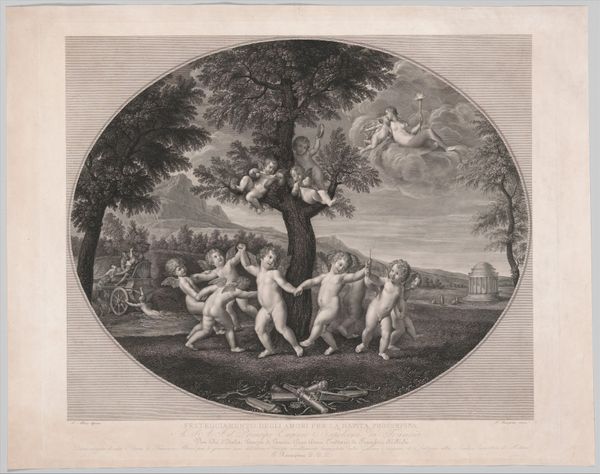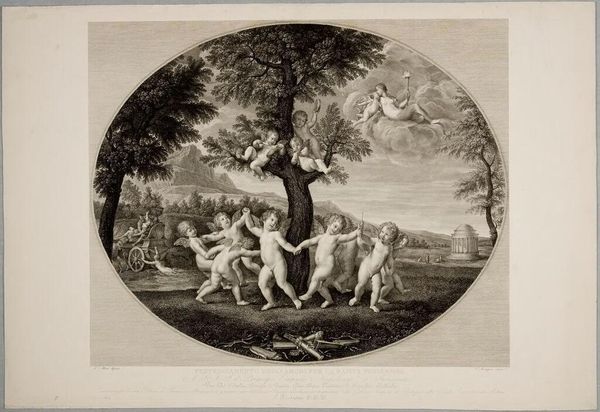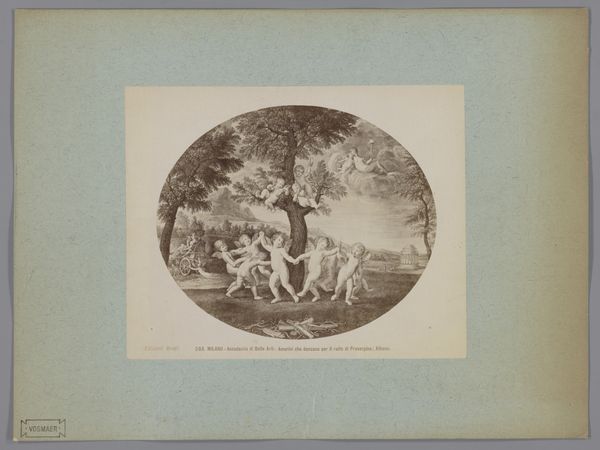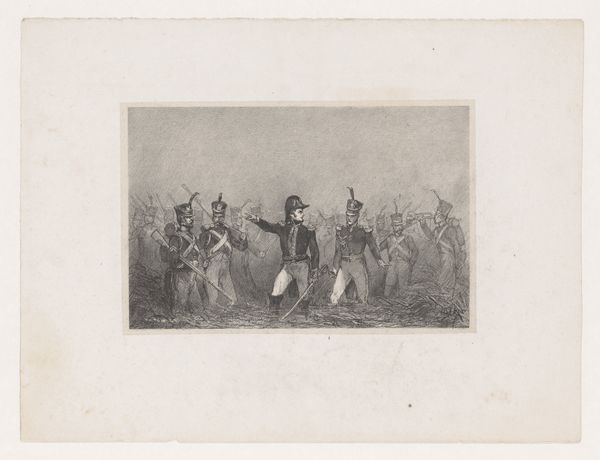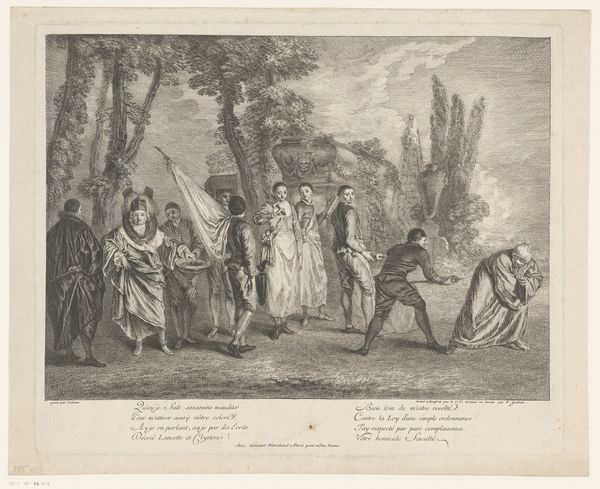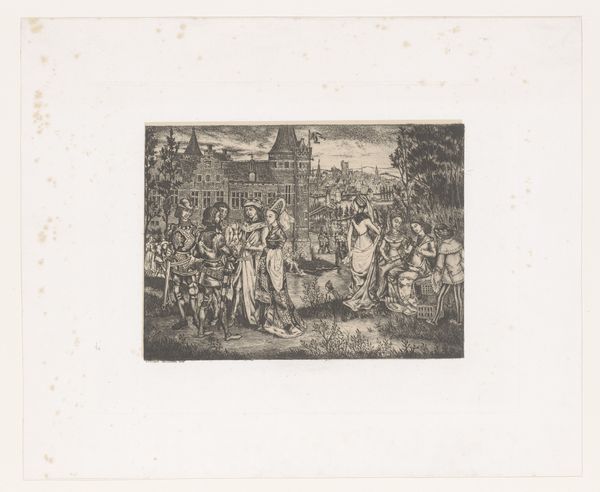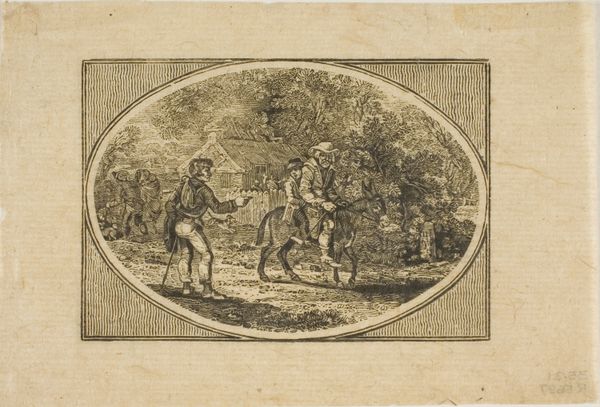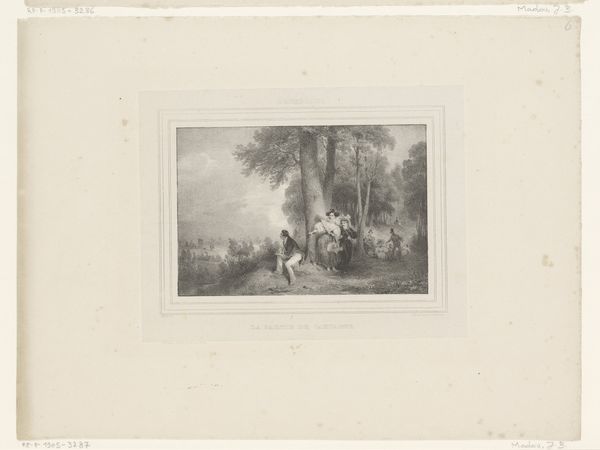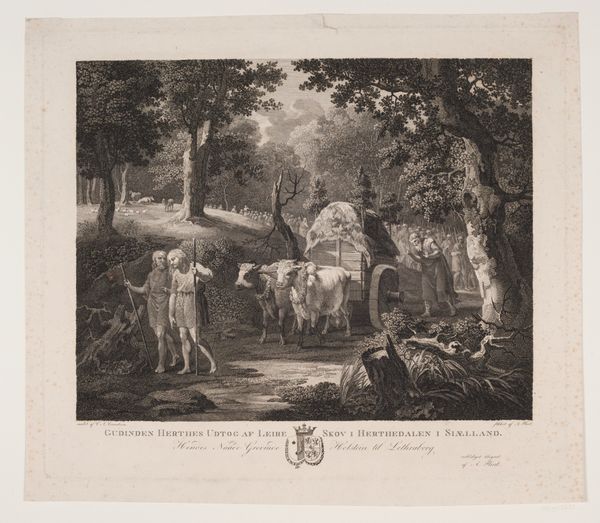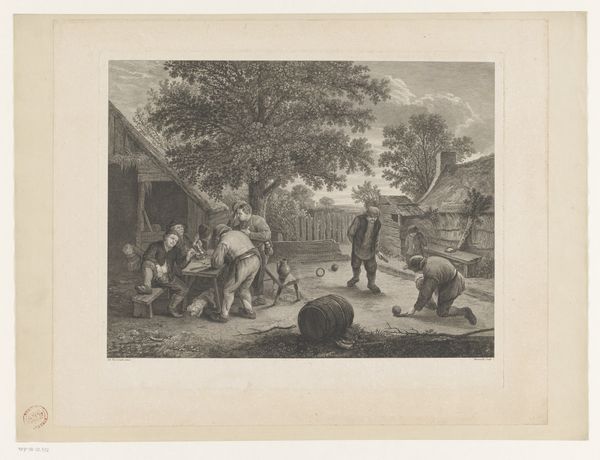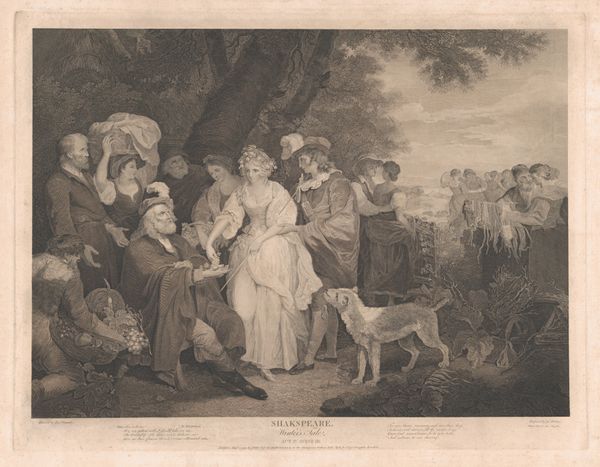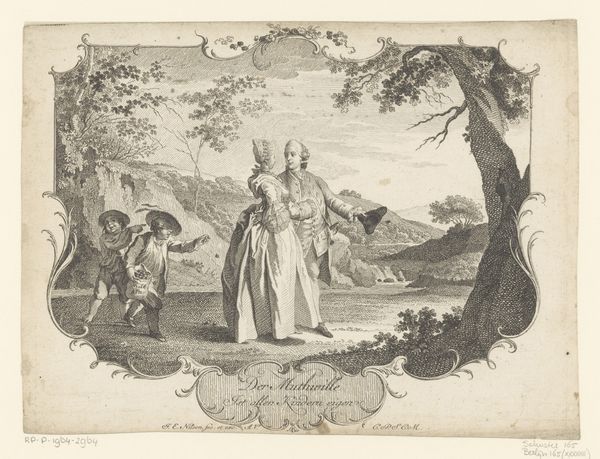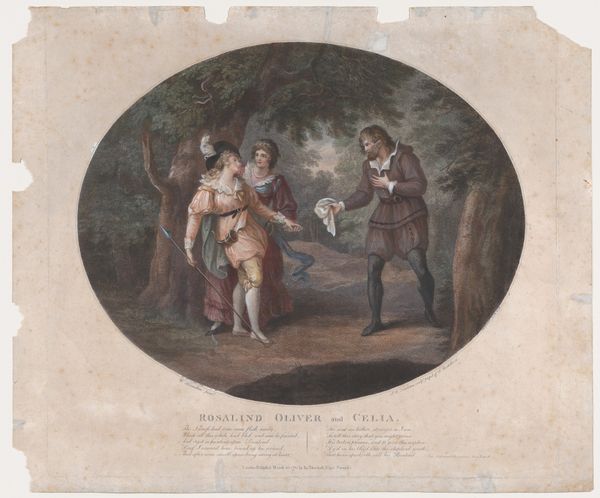
Amorini Celebrate the Rape of Proserpine 1805 - 1812
0:00
0:00
drawing, print
#
photo of handprinted image
#
drawing
#
allegory
#
neoclassicism
# print
#
landscape
#
female-nude
#
male-nude
Dimensions: oval image: 22 1/8 x 27 in. (56.2 x 68.6 cm) sheet (trimmed within platemark): 24 3/8 x 29 7/8 in. (61.9 x 75.9 cm)
Copyright: Public Domain
Editor: So, this print, "Amorini Celebrate the Rape of Proserpine," created between 1805 and 1812 by Francesco Rosaspina, is currently residing at the Metropolitan Museum of Art. The dancing figures are… unsettling, almost ghostly. What exactly am I looking at here, and why celebrate something so violent? Curator: Indeed. Rosaspina presents us with a complex, and frankly, problematic allegorical image filtered through a Neoclassical lens. Consider the historical context: this print emerges during a period of significant social and political upheaval. The Napoleonic era saw a resurgence of interest in classical antiquity. How might that revival shape interpretations of mythology and power? Editor: So, the idealized figures and pastoral landscape… that's Neoclassicism sanitizing a brutal story? Curator: Precisely. It's crucial to recognize the public role of art at the time. Prints like these were disseminated widely, influencing cultural attitudes and even normalizing certain behaviors. How might this idealized representation impact contemporary perceptions of violence and gender roles? Consider that the narrative of Proserpine's abduction wasn't merely mythology; it served as a reflection, however distorted, of power dynamics present in society. Editor: So, it's not just about the myth itself, but about how its visual retelling reinforces those dynamics. I hadn't thought about it that way. Curator: It forces us to examine the power of imagery. It reveals how artistic choices contribute to shaping public opinion. The seeming celebration, staged with innocent-looking cupids, creates a dissonance. Don't you think so? Editor: Absolutely, this discussion definitely casts a new light on what I initially saw as just an unsettling scene. Curator: Yes, and it pushes us to question how museums can adequately contextualize works such as these in an era when we hope for true equality.
Comments
No comments
Be the first to comment and join the conversation on the ultimate creative platform.
